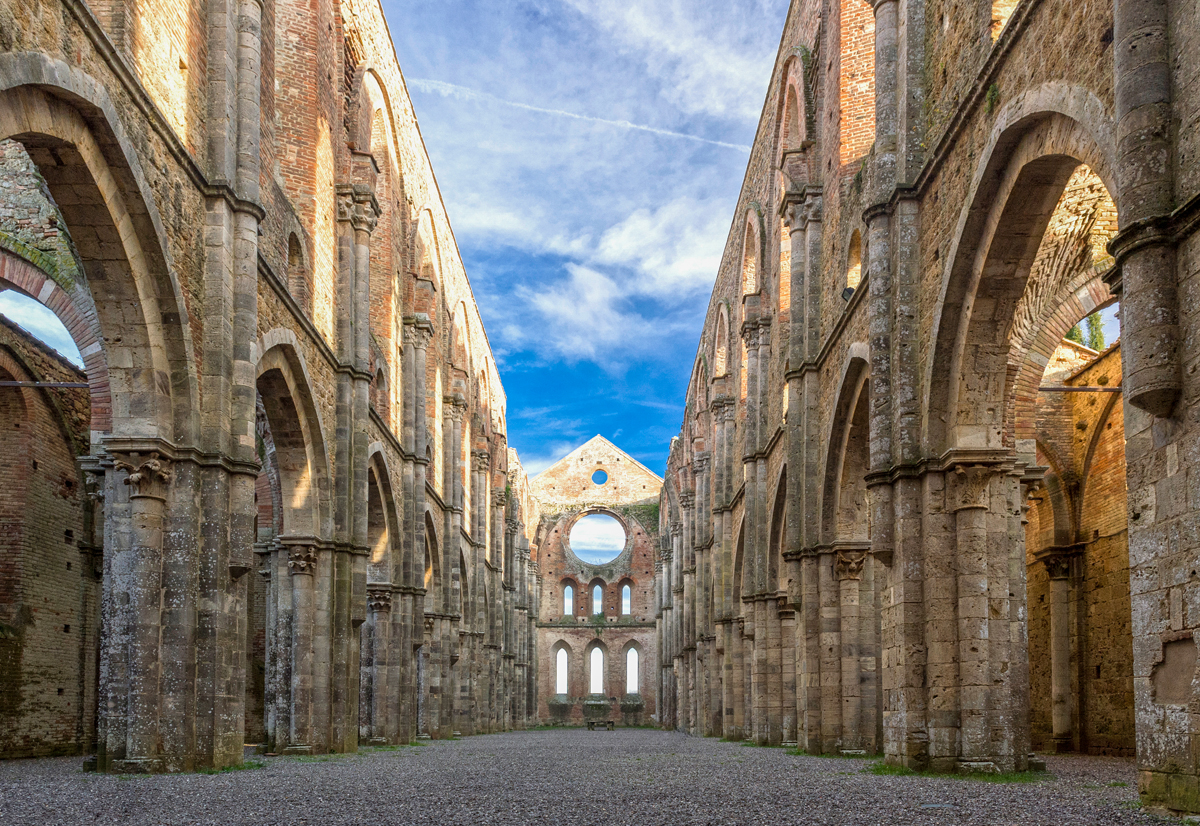The Legend of San Galgano
The Saint Galgano, also known as Galgano Guidotti lived in Tuscany in the XII Century. He was a knight who was later venerated as a saint by the Catholic Church for choosing the life of a hermit. The Legend of San Galgano tells about is sword, planted in the rocky terrain in the hermitage, that bears his name, when he chose to change his life. The place is nowadays a destination for curious and devotees.
About Galgano there is little historical information. He was probably born in 1148 in Chiusdino, among Siena and Maremma areas, by a family of the local nobility. The Legend says that he was a son long desired, and according to the customs of the time he was intended to a life as a warrior. Galgano was born in an age of violence and abuse, and in this historical context his youth was marked by disorder and lust, until his sudden conversion to the religious life and hermitage retirement. The Legend of San Galgano recounts that this new life was lived with the same intensity with which he had previously practiced any kind of debauchery. In the years immediately following his death, on the site of his hermitage, it was built a church, better known as La Rotonda.
La Rotonda is a circular building, famous because it contains and holds the sword that Galgano stuck in the rock when he converted. The architectural style is Romanesque of Siena, characterized by a succession of alternating red and white color bands. The same succession of colors which is also repeated in the dome.
The Abbey of San Galgano with Gothic-Cistercian architectural features, was then built in his honor, beginning in 1218 and not far from La Rotonda.
The building is impressive and testifies the spread and the large following of the cult of San Galgano. The Abbey during the XIV Century reached a great power, thanks to the immunities and privileges granted by various emperors, including Frederick II, and to the generous donations received.
The wealth it reached in 1500 was such that it set off a dispute between the Republic of Siena and the Papacy. After this period of splendor, began the slow decline that have reduced it to a grandiose and mystical ruin. In the past it had become a quarry of building materials, looted and abandoned by men who even sold the lead plates that covered its roof, thus exposing the building to the ravages of time.
And it is precisely the absence of the roof, which collapsed in 1768, which enhances the articulation and the architectural elegance of the lines and make them rush to the open sky.
Nowadays the Abbey, although a ruin, is still used for many fascinating events, shows, concerts and even for enchanting and unforgettable weddings.
Photo terredisiena.it


 English
English Italiano
Italiano Deutsch
Deutsch Français
Français